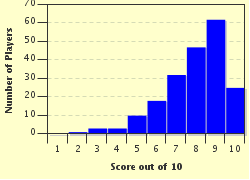Quiz Answer Key and Fun Facts
1. Too smelly! Many tourists visit this area in order to see bubbling mud pools, relax in natural hot springs and admire impressive geysers. But it stinks of rotten eggs! The smell is so pervasive that the town is referred to as "Sulphur City". What is this place called?
2. Too wet! This city in Europe has canals instead of streets, with boats instead of buses and cars, and even the parts that are not normally underwater often get flooded at certain times of year. Which city is this?
3. Too high up! This ancient Incan capital has beautiful architecture and is a great base to start exploring the many of the fascinating historical sites in the region. However, at 3399m above sea level, altitude sickness can be a problem. Where in the world am I?
4. Too sandy! There's no denying that the only remaining "Wonder of the Ancient World" is an impressive sight, but there is an awful lot of sand around and it gets into pretty much everything! Where is this ancient structure situated?
5. Too slippery! It might boast spectacular scenery, midnight sun, the Aurora Borealis and impressive shaggy musk oxen, but over 80% of this country is covered in ice. Its tempting sounding name was an early marketing gimmick. Which country/region is it?
6. Too busy! This city is home to a huge statue you can climb up inside of, several fascinating museums and a variety of fabulous shopping opportunities. However, with an estimated population of 27,858 people per square mile, and attracting over 50 million visitors a year, it's not surprising that it has been dubbed "The City That Never Sleeps". Which city am I describing?
7. Too dry! One of the world's oldest continuously inhabited cities, as well as one of the highest capital cities in the world, this place has some amazing multi-storey buildings covered in intricate geometric designs. But with an average of only 41 rainy days per year, as well as a complete ban on the sale of alcohol in its country, this is definitely what you'd call a dry city. Which of the following is it?
8. Too rainy! At the right time of year, these coral-fringed islands are a tropical paradise, with white sandy beaches, shady palm trees and clear turquoise blue seas teeming with ocean life. Of course, if you're silly enough to go in the middle of monsoon season then you'll get drenched. Which of the following choices fits this description?
9. Too gassy! This amazing deep-blue volcanic crater lake in Central Africa is saturated with carbon dioxide, the same gas that makes soda water fizzy. The trouble is, it's also known as the world's deadliest lake, thanks to a disaster in 1986 where around 1700 people were killed by a sudden large release of carbon dioxide gas. Which deadly lake is this?
10. Too broken! Admittedly this is an impressive structure, being the largest amphitheatre ever built, being almost 2000 years old and being right in the centre of of a cosmopolitan capital teeming with incredible art, architecture and culture. But it doesn't even look finished! Half of it's missing! Which ancient building am I talking about?
Source: Author
emiloony
This quiz was reviewed by FunTrivia editor
Tizzabelle before going online.
Any errors found in FunTrivia content are routinely corrected through our feedback system.


